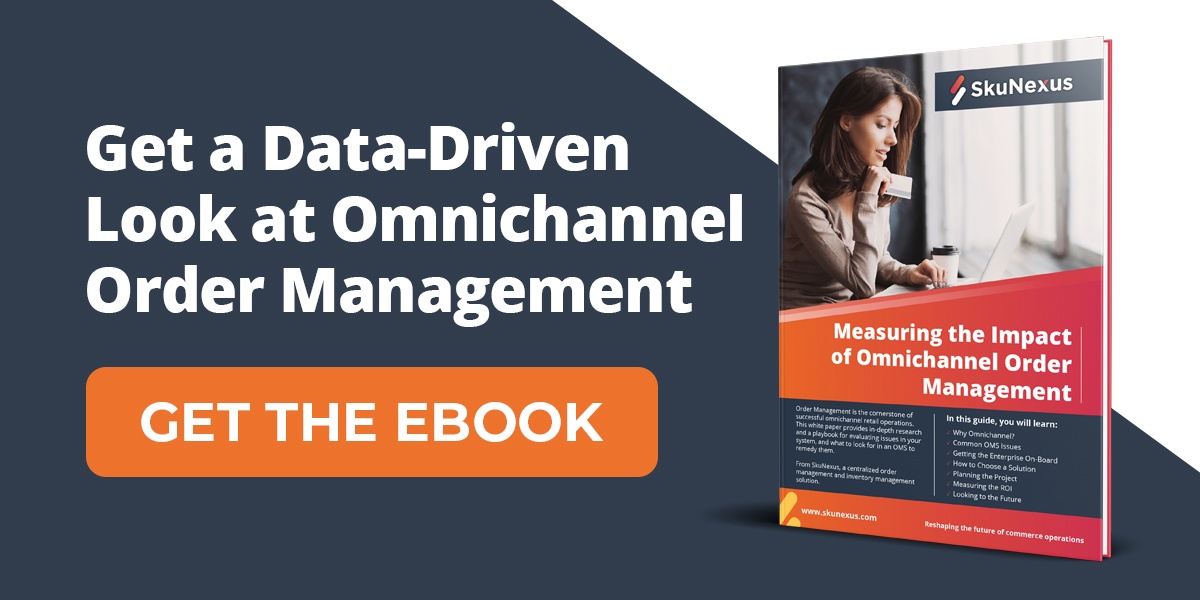These days, consumers are savvier than they have ever been. They want to be able to shop for products when and how they want to.
From their smartphone to their laptop to a visit to a brick-and-mortar store, customers want – expect, really – an omnichannel experience with their favorite sellers.
One of the ways that retailers can provide customers with the experience that they are looking for is to offer in-store fulfillment.
In-store fulfillment fits the needs of customers who use both online and offline shopping methods. Approximately 50% of retail customer want the ability to buy a product online and pick it up in store.
Some shoppers like to search for products on a store’s website, check for availability, make the purchase, and then pick-up the item at the local brick-and-mortar store.
This is a way to save time, shipping costs, and it gives customers almost immediate access to the products they want when they want them.
Another in-store fulfillment option for retailers involves purchases made online being shipped to customers from a local brick-and-mortar store, cutting down on shipping time and saving the business from paying the storage costs of using a warehouse.
Retailers who provide customers with different fulfillment options, including in-store fulfillment, bridge the gap between online and offline shopping, which is exactly what today’s consumers expect.
It’s a method that benefits both consumers and retailers alike.
Benefits of Using In-Store Fulfillment
In-store fulfillment is being able to fulfill an order, no matter what its origin is, from a brick-and-mortar store. Using an in-store fulfillment solution offers many benefits for the customer and the retailer.
For the customer, in-store fulfillment techniques provide a way for them to get the products they want when they want them.
Best Buy offered the “buy online, pick-up in store” option a decade ago, and other national retailers followed suit.
Whether customers want the convenience of picking up their purchases on their own time, the peace of mind knowing that they can return products locally, or they want products immediately but want to avoid the in-store shopping process by buying online and picking up in person, in-store fulfillment gives them what they want.
For retailers, there are some significant benefits to implementing in-store fulfillment.
Not only does it provide better efficiency, accuracy, and speed, it also allows for greater inventory visibility which means faster, more accurate fulfillment.
It also allows something that other fulfillment methods don’t – a positive in-store customer experience, the foundation for creating loyal, repeat customers.
Additionally, in-store fulfillment means that ecommerce retailers benefit in the following ways:
- They will have a competitive advantage. While many large retailers currently take advantage of in-store fulfillment options, many others still haven’t implemented the method. That can provide ecommerce retailers with a way to stay ahead of their competitors.
- They will increase performance and sales. According to Forrester Research, retailers who offer in-store fulfillment experience a 10 to 30 percent increase in online conversion rates over their counterparts who do not offer it.
How In-Store Fulfillment Works
To get a clear picture of how in-store fulfillment works, let’s take a look at the following scenario:
Imagine that you own an apparel business with 20 brick-and-mortar stores and one warehouse.
When each specific season ends, the value of your inventory decreases dramatically because no one wants last season’s fashions.
Due to that, your goal for each season is to maintain the minimum amount of inventory needed to fulfill all your customers’ orders and not have a huge amount of stock leftover.
The inventory for all 20 retail locations is stored in your one warehouse. In this scenario, you will be paying for your inventory to be stored and for shipping to locations all over the country from one warehouse. Additionally, you’ll pay ongoing storage fees for the inventory that doesn’t sell and is left sitting on warehouse shelves.
When the season is over, you are forced to sell your leftover inventory at greatly reduced prices to move it off the shelves to make room for the next season's inventory.
While you will likely generate some revenue from these sales, it certainly won’t be comparable to what you would have earned had the stack sold during the season.
Adding an in-store fulfillment solution to the above situation will help you reduce costs and increase your bottom line. Options for in-store fulfillment include:
- Buy online, pick up in-store (BOPIS)– This option allows shoppers to search and buy products online and then pick up their purchases at a local brick-and-mortar store. It’s become a standard practice for national retailers, but because it’s not widely used by other ecommerce businesses, it will still offer you a leg up on the competition.
- Ship from store – This option allows customers to search and buy products online and to have them shipped from one of your local brick-and-mortar locations directly to the customer (or to a closer store for customer pick up).
- Dropshipping – This option allows other retailers to sell your products, which are then fulfilled from your store locations.
Using any of the above strategies for in-store fulfillment will lower your warehousing and storage costs because inventory is located at a store location rather than your warehouse. You will also potentially save on shipping costs because orders can be shipped from store locations that are closer to where the customer lives, instead of just the one location where your warehouse is.
Final Thoughts about In-Store Fulfillment
Bridging the gap between online and offline retail strategies, in-store fulfillment offers customers what they want and retailers the opportunity to increase sales and grow their business.
If you are not currently offering in-store fulfillment for your customers, it is a tactic that you should consider. It will increase your product visibility and combine your ecommerce and retail presences. It’s a strategy that will boost your sales and improve your bottom line.









